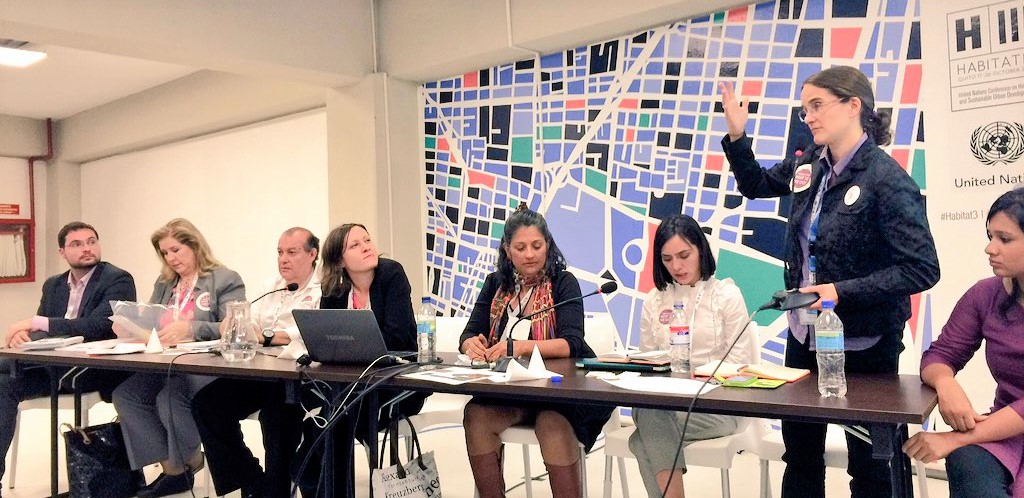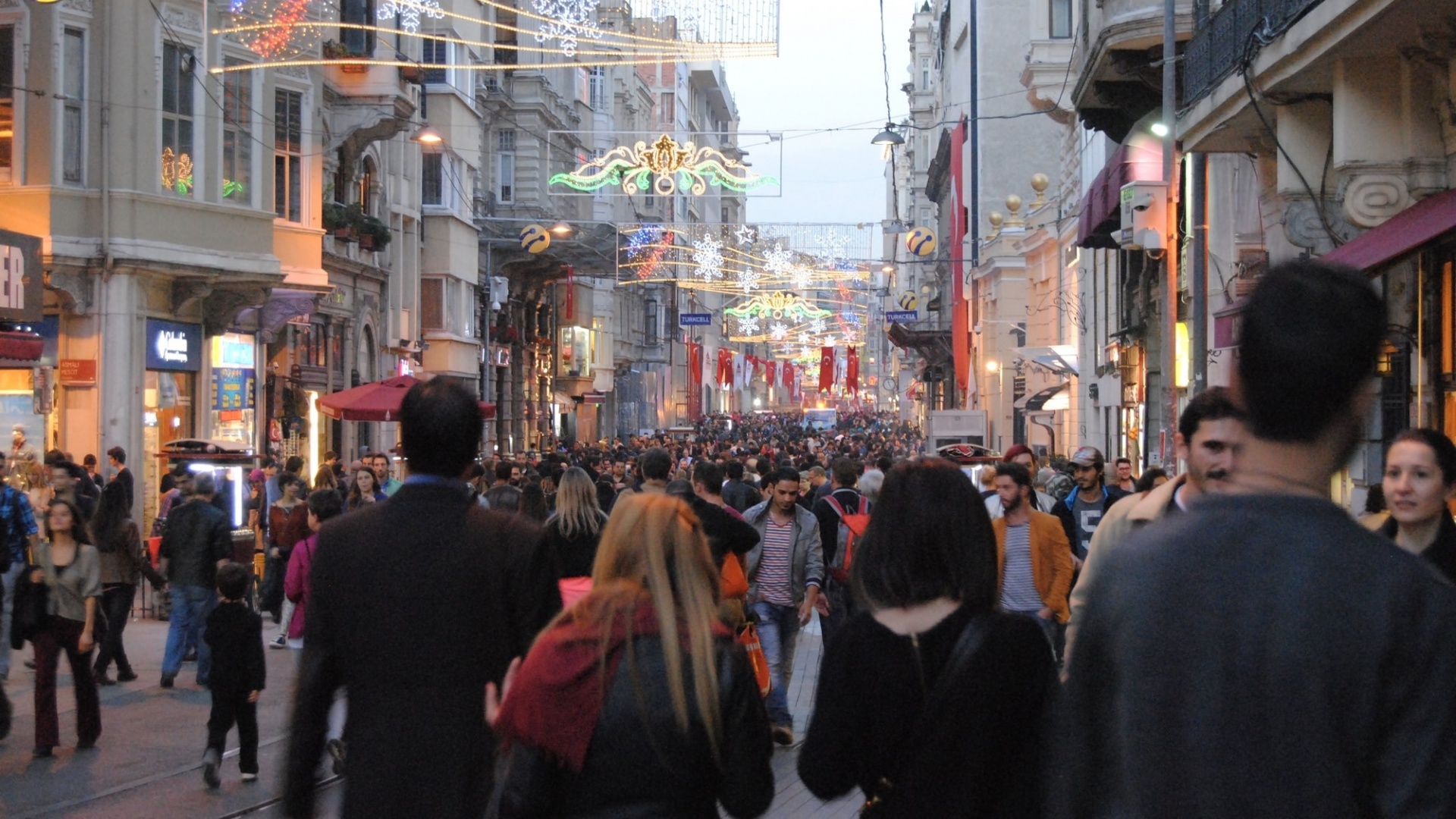The right to the city has become a key concept within ongoing discussions dealing with social transformation and urbanization. Originally framed by Henri Lefebvre as a renewed access to urban life, social movements and local governments would strongly embrace the concept in the late 2000s as a guiding vision for a truly transformative and inclusive urban governance. The right to the city can help advance a renewed social contact based on an enhanced cooperation between local governments and social movements.
This section will help you know more about how and why did local governments’ engage with the right to the city over the last decade. It explores emerging ideas and proposals on how to advance more inclusive and democratic cities through local action.
Why advancing a right to the city agenda?
An increasing number of local governments worldwide tends to refer to the right to the city vision more often these days when addressing social inclusion and participatory democracy challenges. This is particularly relevant for the fight against socio-spatial inequalities and structural barriers to the social inclusion of vulnerable groups. It also deals with the impacts of climate change, financialization and digitalization over urban life.
The right to the city offers a comprehensive approach from which to analyze these challenges from a critical perspective. It also offers an opportunity to foster policy innovation and coordinated action with civil society and human rights defenders. In perspective, the right to the city approach allows local governments to recognize grassroots practices for the improvement of urban life led by communities. This includes cooperative housing, care economy, social and solidarity economy, urban commons...
Since the early 2000s, the global movement for the right to the city has brought together very different types of stakeholders to jointly advocate in favor of renewed approaches to urban policies. Many grassroots initiatives have recognized the right to the city as an opportunity to promote alternative ways for partnership and city-making.

While defending how another world is possible and it starts in the city, local governments are taking a step forward that highlights their key role in building more inclusive cities to ensure global agendas leave no one and no place behind. Indeed, the global movement for the right to the city has played an increasingly important role in the definition and implementation of global agendas on sustainable development, proposing the right to the city as a guiding vision that helps ensure an inclusive urbanization.
The right to the city was first framed by French philosopher Henri Lefebvre in his homonymous book published in May 1968. Through his analysis, Lefebvre set an unprecedented critique of what someone could now identify as commodification of urban life. He proposed grassroots participation in the co-creation of urban space as a meaningful way to address this situation. The goal was to achieve fairer and emancipatory cities for all.
Another recognized social theorist would follow the steps of Lefebvre short after: David Harvey. Harvey did not only deepen Lefebvre's analysis, but contributed to make the right to the city widely popular. He proposed ways by which social movements could engage with the concept in practical terms. Harvey helped to connect the right to the city with challenges posed by contemporary urbanization and invited social movements to embrace this concept to tackle these challenges in a bottom-up and democratic way.
« The right to the city is far more than the individual liberty to access urban resources: it is a right to change ourselves by changing the city. It is, moreover, a common rather than an individual right since this transformation inevitably depends upon the exercise of a collective power to reshape the processes of urbanization. The freedom to make and remake our cities and ourselves is, I want to argue, one of the most precious yet most neglected of our human rights »
David Harvey in Social Justice and the City (2010)
The right to the city would therefore emerge as a guiding vision for social movements worldwide as an instrumental approach to articulate their demands towards local rights access (e.g: land, political participation, access to basic services). From Africa to the Americas, grassroots organizations would call on governments to recognize these needs and their own ways to fulfill them, from community-led housing to political organizing.
Social movements would also propose new concepts to help bring about the right to the city vision in worldwide urban territories. Some relevant examples include: the social function of the city, human rights habitat, urban rights or common goods. Some of these theoretical proposals would even be recognized in law and government practice, as shown by Brazil’s City Statue (2001) or the Mexico City Charter for the Right to the City (2007).
The World Social Forums held in the early 2000s worked as catalyst for strengthening dialogue between civil society and local governments on how to promote alternative models of urban development and globalization.
The first editions of the Forum of Local Authorities for Social Inclusion (FAL) were held within the World Social Forums to provide a space for local government and civil society exchange. Local policies on diversity, the inclusion of vulnerable groups or participatory budgeting were addressed in this context. Political debates focused on imagining an alternative globalization and sustainable development model.
International local government networking springing from the World Social Forums (the FAL, the FALP) would increasingly devote more attention to the right to the city. It would do so in connection to the urbanisation of poverty, highlighting how the economic and budget crisis faced by local governments since the 2008 crisis weakened their action capacity.
On one hand, periodical meetings of the Peripheral Local Authorities Forum (FALP) such as those of Getafe (2010), Canoas (2013) and Morón (2015) would address these issues from a spatial inequality perspective. The FALP Forum brought together local governments in peripheral areas and cities to call for a polycentric development of metropolitan areas.
Meeting of the Committee on Social Inclusion and Participatory Democracy held in 2008: A pioneer group in advancing the right to the city within UCLG.
On the other hand, the Committee on Social Inclusion and Participatory Democracy (created as a follow-up to the FAL) would hold global seminars of local governments for the right to the city. The first was held in Saint Denis (2012) while the second one took place in Mexico City (2015). These seminars helped to articulate a common understanding on the right to the city among local governments and civil society.
Saint Denis Seminar of Local Governments for the Right to the City (2015)
« In an age where one per cent of the population holds more than half of the global wealth, urban areas will see tensions and inequalities that are unsustainable. In this context, local governments and their people are urgently claiming for the Right to the City as a necessary step to build a fair, inclusive, democratic and sustainable urban world (...) The Right to the City is an individual and collective right for all inhabitants, in which territories of the cities and their hinterlands are considered as spaces for the exercise and fulfillment of rights in order to ensure that people have access to the resources, services, goods and opportunities that the city brings in a fair, universal, democratic and sustainable way »
Mexico City International Seminar of Local Governments for the Right to the City (2015)
In 2014, civil society and local governments met in Sao Paulo to launch the Global Platform for the Right to the City (GPR2C) initiative. The platform would soon become a key rallying point for local actors to promote advocacy initiatives with regards to the right to the city.
« The Right to the City is the right of all inhabitants, present and future, permanent and temporary, to inhabit, use, occupy, produce, govern and enjoy just, inclusive, safe and sustainable cities, villages and human settlements, defined as commons essential to a full and decent life. The Right to the City is a collective right that highlights the territorial integrality and interdependence of all internationally recognized civil, political, economic, social, cultural and environmental rights, as regulated in international human rights treaties, bringing them the territorial dimension and a focus on adequate life standards »
Global Platform for the Right to the City
Indeed, after 2014, local government would take an active role in the UN-sponsored Habitat III process aimed at developing a New Urban Agenda (NUA): A roadmap for worldwide urbanization in the coming twenty years. In this context, the CSIPDHR worked together with UCLG (Global Taskforce) and civil society gathered around the Global Platform for the Right to the City to achieve the NUA's recognition of the right to the city: A concept which was yet to be recognized by an international document of such kind.

The Habitat III process brought together local government and civil society advocacy efforts at a global level in favor of the right to the city.
This coalition of actors developed a proactive advocacy and communication strategy from 2015 to 2016, held also in connection to climate change discussions mainly developed through the COP21 process (2015). In the context of the Habitat III final conference (Quito, 2016), worldwide governments agreed to partially include the right to the city in the New Urban Agenda - only a few days after UCLG fully recognized this concept as a cornerstone of its policy agenda (see the Bogotá Commitment, 2016).
« We share a vision of cities for all, referring to the equal use and enjoyment of cities and human settlements, seeking to promote inclusivity and ensure that all inhabitants, of present and future generations, without discrimination of any kind, are able to inhabit and produce just, safe, healthy, accessible, affordable, resilient and sustainable cities and human settlements to foster prosperity and quality of life for all. We note the efforts of some national and local governments to enshrine this vision, referred to as “right to the city”, in their legislation, political declarations and charters »
New Urban Agenda (2016)
Since 2016, the global movement for the right to the city focused its efforts on the implementation of the right to the city through sustainable development agendas. Accordingly, local governments within UCLG and the CSIPDHR have promoted joint action in areas like the right to housing, the social inclusion of migrants, metropolization, participatory democracy, the ecological transition, social and solidarity economy...
At present, the right to the city remains a meaningful framework for local governments to foster policy innovation, collective action and dialogue with civil society and urban residents to address pressing social inclusion and participatory democracy challenges experienced in most cities of the world.
A legal and policy concept that implies that urban realities such as the city, land or housing are fundamental for the wellbeing of every city resident. It gives legitimacy to governments and communities to take action, to adopt regulations trying to conciliate private interest and the common good, or to accommodate community-led initiatives within the urban environment and local governance.
A social institution managed by local communities with the purpose of ensuring equitable access to common goods and urban rights. It is defined by the non-commercial management of resources and services provided, which are usually run in a democratic manner. Urban commons propose an alternative model of management not based neither on direct public intervention nor private interest.
A vision of metropolitan governance that recognizes the existence of socio-spatial inequalities and proposes ways to reverse them based on spatially inclusive urban development. It fosters development and participation of all urban areas, including peripheral neighborhoods and cities, so that opportunities are accessible to all residents and their needs, backgrounds and contributions are fully recognized.
A model of political organization based on mechanisms allowing residents to participate consistently and frequently in the management of local affairs. Beyond providing more channels of influence and fostering more residents to participate, this vision relies on making the local government more transparent and promoting and recognizing community organizing.
Guiding vision towards an alternative economic and social model that tackles the climate emergency. It proposes a roadmap for sustainability focused on transforming production, consumption and life habits. Its long-term toolkit focuses on building resilience and carbon-free societies that are also equitable and solidary.
An understanding of the economy that prioritizes the needs of people and ethics over financial profit. It encompases a wide set of individual or community-led initiatives, guided by values of inclusion, sustainability, democratic organization and social responsibility, which ultimately seeks to foster social transformation.



